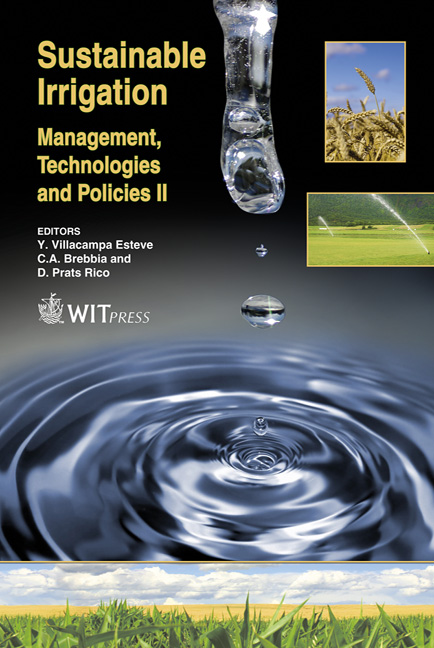Determining The Climatologically Suitable Areas For Wheat Production Using MODIS-NDVI In Mashhad, Iran
Price
Free (open access)
Transaction
Volume
112
Pages
7
Page Range
273 - 279
Published
2008
Size
349 kb
Paper DOI
10.2495/SI080271
Copyright
WIT Press
Author(s)
S. H. Sanaeinejad, S. M. Hasheminiya & S. Khojasteh
Abstract
One of the most important factors in sustainable irrigation is the adaptability of crops to climate. Vegetative vigor or "greenness" of wheat could be considered as an appropriate index to measure water availability and deficiency stress and also plant health, plant density and quality. The index is called Normalized Difference Vegetation Index (NDVI). In this study MODIS-NDVI values were compared with climatological parameters to assess the relations between vegetative vigor and climatological parameters. The NDVI values for three selected wheat farms in Mashhad area were calculated using MODIS images for 2003 and 2004 growing seasons. The data of four climatological parameters including air temperature, precipitation, relative humidity and sunshine hours were also collected from the nearest weather stations. Then a multi-regression statistical analysis was performed to find the relation between wheat NDVI and climatological parameters in the study area. Pertaining statistical methods including Mixed, and Stepwise (Forward and Backward) were used in the analysis. Scattering matrix was used to determine the data scattering of the models and NDVI values for comparison. The results showed that backward method was more appropriate than the other two methods for predicting NDVI values of the study area. After finalizing this model the results were statistically tested using 20% of the samples for the test purpose and the remaining 80% for running the model. The results showed that there was no significant difference between Backward, Testing Backward and Training Backward models. The results from the latter method showed that the NDVI of the pixels could be estimated for 79% of the cases. It can be stated that the rest of NDVI values could be affected by other environmental parameters such as soil type and characteristics, topographical conditions, agronomical practices, plant diseases and other unknown factors. Finally, some maps were developed showing the potential wheat farming in the area according to the model results. Keywords: NDVI, wheat, GIS, multi-regression model, MODIS.
Keywords
NDVI, wheat, GIS, multi-regression model, MODIS.





